Features
Was the Third Prime Minister of Ceylon the son of a murderer ?
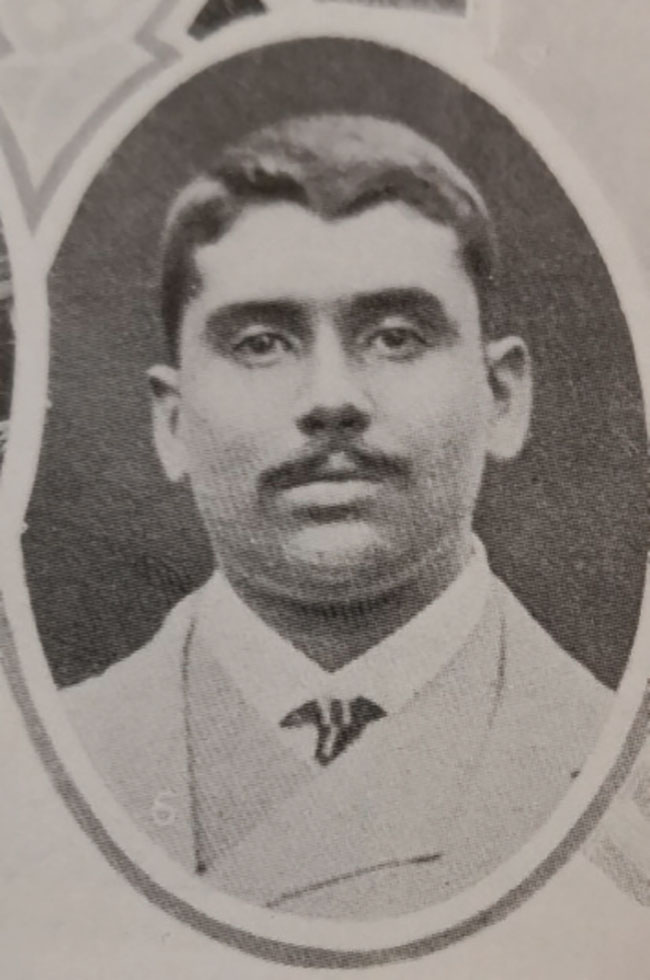
THE TRIAL OF JOHN KOTELAWALA (SENIOR)
By Hugh Karunanayake
John Kotelawala (Senior) was the father of Sir John Kotelawala the third Prime Minister of independent Ceylon, who held office from 1953 to 1956. John Kotelawala (Snr) was born in 1865 in the village of Bandaragama. Having attended the village school where he learnt his English, he attended schools in Colombo and then started life as a third class constable clerk in the Ceylon Police Force in the 1880s.
As a policeman he was good in detective work and his general application to his duties impressive, and was within a few years promoted to the rank of Inspector. It was then that he sought the hand of, and married Alice Attygalle, the daughter of Mudaliyar D.C.G. Attygalle of Colamunne. He resigned from the police soon after his marriage.
Mudaliyar Attygalle was a man of considerable wealth, owning several coconut estates, plumbago mines, and other properties in the Kurunegala and Dodangaslanda areas. He was also a great benefactor to a number of charities. Among his many acts of philanthropy was the donation for public use, of the Kurunegala Rest House which he built entirely at his own expense. The building stands in the main street of Kurunegala to this day.
Mudaliyar Attygalles family consisted of his wife, son, and three daughters. The son, who was born in 1885, was a minor when the Mudaliyar died in 1901. John Kotelawala, the Mudaliyar’s only son in law at the time of his death, took over the management of the Mudaliyar’s estate which was left to his widow by his will.
By 1904, Francis, the Mudaliyar’s son realizing that his brother-in-law was utilizing profits from the estate for his own benefit, applied for letters of “venia aetatis” by which the Governor of Ceylon had the power to make a major of a https://d.docs.live.net/765edf3312b1769f/Documents/THE%20TRIAL%20OF%20JOHN%20KOTELAWALA.docxminor in the eyes of the law. The letters were accordingly granted to Francis by the Governor, and he took over the management of the family properties.
Kotelawala not only resisted this, but also openly showed his defiance and there was considerable friction between him and his brother-in-law. He tried various ruses to gain possession of some of the properties, but failed in all his attempts. He was particularly interested in a property which he made out to the family as a piece of abandoned plumbago land, whereas it was in fact a lucrative mine later known as the Kahatagaha mine. This turned out to be one of the largest and most lucrative plumbago mines in Sri Lanka.
He tried every trick in the book to gain possession of the mine, including fraud, deceit, and threats to the family, but failed; the main obstacle being his brother in law Francis. He is said to have even threatened to commit suicide in front of his mother in law by pretending to cut his throat with a knife that he produced, to which his mother in law gently informed him that she had not the slightest objection to that, and called off his bluff. Kotelawala was a physical culturist and a pupil of the Hungarian, Eugene Sandow, and projected an image of a tough and bold person who would not tolerate opposition.
The friction between him and his in laws included an incident where he attempted to take forcible possession of a family owned mine, but was chased away by workers loyal to Francis. He had to run away and humiliatingly take refuge in a boutique in which he locked himself up in fear. That incident would have hurt his projected tough image more than the actual thrashing he may have received if he fell into the hands of the angry workers. Being a man of considerable vanity, he had been sulking and threatening dire consequences. In October 1906 John Kotelawala (snr) sailed for Japan in order to float a company called the Ceylon Trading Co, most probably to provide him with an alibi as unfolding events would reveal.
THE DECEASED – FRANCIS DIXON ATTYGALLE
Francis Attygalle was said to be a most unassuming man with an engaging disposition, and very popular with his employees. He had two sisters other than his older sister Alice Kotelawala. They were Lena and Ellen. Lena was given in marriage to Colonel TG Jayewardene brother of EW Jayewardene, father of former President J.R.Jayewardene. The younger sister Ellen later married F.R. Senanayake brother of DS Senanayake, Ceylon’s First Prime Minister. There is no denying the fact that the family of the three sisters dominated politics and governments in Sri Lanka during most of the Twentieth Century.
The Attygalle sisters by their marriage to the Kotelaweala- Senanayake- Jayewardene triumvirate is said to have shoe horned these “political nobodies” into “somebodies’, the upward mobility being provided by the Attygalle family wealth. The Attygalle inheritance was massive, and the three daughters brought with them substantial dowries in addition to their inheritance. By 1927 T.G. Jayewardene owned 2,861 acres of tea, rubber, and coconut, Alice Kotelawala 2,058 acres of rubber and coconut and Ellen Senanayake 3,027 acres mainly of coconut.
Francis Attygalle attended school at Wesley College and was boarded in the home of Mr CP Dias Head Master of the school who lived in the Pettah near Price Park, which was then a quiet, residential area. Even after leaving school Francis continued to live in Mr Dias’s house making it his Colombo headquarters. On the evening of December 5, 1906 he was reclining on a chair in the verandah of Mr Dias’s home, when he was called out by a boy who wanted him to meet a man named Baron Singho who was ostensibly seeking assistance to get a job. Having dismissed the man, Francis was returning to the house when he was shot by a gun fired from a few yards away. The 22-year old Francis died two days later in hospital after making a dying disposition.
John Kotelawela returned to Ceylon by ship on the morning of January 24, 1907 and was promptly arrested by a police party headed by Mr Herbert Dowbiggin, Superintendent of Police, Colombo, who was in charge of investigations into the murder. Three persons were charged with the murder. They were Baron Singho, Singhone Perera, and John Kotelawala.
It was the case for the prosecution that as a result of family disputes, John Kotelawala had decided to destroy his brother in law Francis Attygalle. He conspired with Singhone Perera, a former police constable who served under him, to kill Atyygalle. Singhone had left the Police force at the same time as Kotelawala, and was employed as a rent collector by the latter, who also provided him accommodation in one of his houses.
According to the prosecution, Singhone who was a trusted servant of Kotelawala, was paid Rs 500 through a bogus mortgage payment as a consideration for the killing, and having arranged the killing, Kotelawala left for Japan in October 1906 to create an alibi for himself. Singhone then contacted Piloris Fernando alias Pila a 23-year old native of Wadduwa, and brought him to Colombo where he resided in Singhone’s home for some weeks prior to the murder. On November 16, Singhone arranged with Pila who was a good marksman, to purchase a gun from Walker and Sons, Pettah, under an assumed name. The gun was purchased by Pila and brought to Singhone’s house where it was concealed in a wooden box.
On the night of December 5, they went across Price Park and approached Mr Dias ‘ garden. According to Pila, who turned Crown witness in the case, Singhone asked him to wait near the gate while he went into the compound with the gun. Singhone then had Baron lure Francis out of the house and shot him. He is then said to have left the gun and the bag and hurried back to the gate where he met Pila, gave him fie rupees and asked him to go back to his village.
The prosecution was based largely on Pila’s evidence as Crown Witness, and it could be presumed that his version of what transpired was tailored to protect his role in the killing. What was more likely the case was that Pila who was an expert marksman did the shooting, and was directed by Singhone to arrive at a rendezvous near the gate where he would wait to execute Pila. Unfortunately for Sighone, Pila sensing danger had not returned to him, instead walking back through a devious route to his village in Wadduwa, without meeting Singhone. The prosecution case however had to depend partly on Pila’s evidence, and it alleged that Singhone conspired with Kotelawala to murder Francis and in accordance with Pila’s evidence, Singhone did the shooting as well.
THE TRIAL
The trial in the Supreme Court commenced on April 15, 1907 before an English speaking jury consisting entirely of Europeans. The prosecution was led by Mr C.M. Fernando Senior Crown Counsel, assisted by Messrs H.J.C.Pereira, R.H.Morgan, James Van Langenberg, C Brooke Elliott and B.W. Bawa. The accused were defended by Mr C Hayley, Eardley Norton, Thomas Thornhill, and R.L. Pereira.
A significant factor was that the defence expenses of Sighone Perera was met by John Kotelawala, a fact that was readily admitted by defence counsel. While conceding that there was no implication of guilt in such conduct, the prosecution averred that the defence of Singhone Perera had been arranged by Kotelawala even before he arrived in Ceylon from his visit to Japan, a fact which the prosecution believed pointed strongly in favour of its case.
From the evidence that was led at the trial, it was clear, regardless of who did the actual shooting, that Singhone conspired with Pila to murder Francis.
Singhone however was loyal to his erstwhile master, and did not reveal anything to implicate John Kotelawala, although circumstantial evidence suggested a link between the two, working towards the common objective of destroying Attygalle. It was established by the prosecution that Kotelawala made threats to the deceased, and had a strong motive to eliminate him. It was not possible for the case for the Crown to be tested by the jury, because Kotelawala committed suicide in the remand prison having consumed arsenic, after Pila’s evidence was led. He had apparently concealed the arsenic in the sleeve of his coat for over two months in readiness for use when necessary.
At the conclusion of the trial, Singhone Perera was convicted, and paid the supreme penalty. Baron Singho was acquitted.
THE AFTERMATH
John Kotelawala was popular with the carters and harbour workers of Colombo whose welfare he had espoused with passion. Rumours that he was poisoned by the authorities spread around the city and large crowds gathered around his home “Fellowsleigh” in Asoka Gardens, and turned violent destroying public property. The home of the Crown prosecutor CM Fernando. ” Netherton ‘ in Union Place was under police protection for several weeks, until calm was restored.
John Kotelawala left two sons, John Lionel (later Sir John), and Justin, and a daughter Freda who later married Dr CVS Corea. Corea’s son, the late Dr Gamani Corea was an internationally renowned economist.The trial of the accused received considerable publicity by which newspapers reported proceedings in detail, on a daily basis. In later years however, the national press in Sri Lanka appears to have thrown a blanket of silence over the case, presumably under the influence of interested persons whose political destinies may have been affected by the publicity.
Consequently, not many in Sri Lanka especially during the second half of the twentieth century, were familiar with the case which was widely regarded as one of the most sensational murder trials in the country. The conspiracy of silence was so effective that even members of the legal fraternity, when referring to this case called it the “K” case, rather than the “Kotelawala ” case.
It has also been rumoured that most of the copies of the book by A.L. de Witt and G.E.G. Weerasinghe entitled “The Attygalle Murder Case” (from which most of the material in this article was extracted) were destroyed by interested persons, and very few copies exist.
(This article was first published by the writer in The Ceylankan Journal of The Ceylon Society of Australia # 27 of August 2004.)
Features
When water becomes the weapon

 On the morning of November 28, 2025, Cyclone Ditwah made an unremarkable entrance, meteorologically speaking. With winds barely scraping 75 km/h, it was classified as merely a “Cyclonic Storm” by the India Meteorological Department. No dramatic satellite spiral. No apocalyptic wind speeds. Just a modest weather system forming unusually close to the equator, south of Sri Lanka.
On the morning of November 28, 2025, Cyclone Ditwah made an unremarkable entrance, meteorologically speaking. With winds barely scraping 75 km/h, it was classified as merely a “Cyclonic Storm” by the India Meteorological Department. No dramatic satellite spiral. No apocalyptic wind speeds. Just a modest weather system forming unusually close to the equator, south of Sri Lanka.
By December’s second week, the numbers told a story of national reckoning: over 650 lives lost, 2.3 million people affected, roughly one in ten Sri Lankans, and economic losses estimated between $6-7 billion. To put that in perspective, the damage bill equals roughly 3-5% of the country’s entire GDP, exceeding the combined annual budgets for healthcare and education. It became Sri Lanka’s deadliest natural disaster since the 2004 tsunami.
The Hydrology of Horror
The answer lies not in wind speed but in water volume. In just 24 hours on 28 November, hydrologists estimate that approximately 13 billion cubic meters of rain fell across Sri Lanka, roughly 10% of the island’s average annual rainfall compressed into a single day. Some areas recorded over 300-400mm in that period. To visualise the scale: the discharge rate approached 150,000 cubic meters per second, comparable to the Amazon River at peak flow, but concentrated on an island 100 times smaller than the Amazon basin.
The soil, already saturated from previous monsoon rains, couldn’t absorb this deluge. Nearly everything ran off. The Kelani, Mahaweli, and Deduru Oya river systems overflowed simultaneously. Reservoirs like Kala Wewa and Rajanganaya had to release massive volumes to prevent catastrophic dam failures, which only accelerated downstream flooding.
Where Development Met Disaster
The human toll concentrated in two distinct geographies, each revealing different failures.
In the Central Highlands, Kandy, Badulla, Nuwara Eliya, Matale, landslides became the primary killer. The National Building Research Organisation documented over 1,200 landslides in the first week alone, with 60% in the hill country. These weren’t random geological events; they were the culmination of decades of environmental degradation. Colonial-era tea and rubber plantations stripped highland forests, increasing soil erosion and landslide susceptibility. Today, deforestation continues alongside unregulated hillside construction that ignores slope stability.
The communities most vulnerable? The Malaiyaha Tamil plantation workers, descendants of indentured labourers brought from South India by the British. Living in cramped “line rooms” on remote estates, they faced both the highest mortality rates and the greatest difficulty accessing rescue services. Many settlements remained cut off for days.
Meanwhile, in the Western Province urban basin, Colombo, Gampaha, Kolonnawa, the Kelani River’s overflow displaced hundreds of thousands. Kolonnawa, where approximately 70% of the area sits below sea level, became an inland sea. Urban planning failures compounded the crisis: wetlands filled in for development, drainage systems inadequate for changing rainfall patterns, and encroachments on flood retention areas all transformed what should have been manageable flooding into mass displacement.
The Economic Aftershock
By 03 December, when the cyclone had degraded to a remnant low, the physical damage inventory read like a national infrastructure audit gone catastrophic:
UNDP’s geospatial analysis revealed exposure: about 720,000 buildings, 16,000 km of roads, 278 km of rail, and 480 bridges in flooded zones. This represents infrastructure that underpins the daily functioning of 82-84% of the national economy.
The agricultural sector faces multi-season impacts. The cyclone struck during the Maha season, Sri Lanka’s major cultivation period, when approximately 563,950 hectares had just been sown. Government data confirms 108,000 hectares of rice paddies destroyed, 11,000 hectares of other field crops lost, and 6,143 hectares of vegetables wiped out. The tea industry, while less damaged than food crops, projects a 35% output decline, threatening $1.29 billion in annual export revenue.
Supply chains broke. Cold storage facilities failed. Food prices spiked in urban markets, hitting hardest the rural households that produce the food, communities where poverty rates had already doubled to 25% following the recent economic crisis.
The Hidden Costs: Externalities
Yet the most consequential damage doesn’t appear in economic loss estimates. These are what economists call externalities, costs that elude conventional accounting but compound human suffering.
Environmental externalities : Over 1,900 landslides in protected landscapes like the Knuckles Range uprooted forest canopies, buried understory vegetation, and clogged streams with debris. These biodiversity losses carry long-term ecological and hydrological costs, habitat fragmentation, compromised watershed function, and increased vulnerability to future slope failures.
Social externalities: Overcrowded shelters created conditions for disease transmission that WHO warned could trigger epidemics of water-, food-, and vector-borne illnesses. The unpaid care work, predominantly shouldered by women, in these camps represents invisible labour sustaining survival. Gender-based violence risks escalate in displacement settings yet receive minimal systematic response. For informal workers and micro-enterprises, the loss of tools, inventory, and premises imposes multi-year setbacks and debt burdens that poverty measurements will capture only later, if at all.
Governance externalities: The first week exposed critical gaps. Multilingual warning systems failed, Coordination between agencies remained siloed. Data-sharing between the Disaster Management Centre, Meteorology Department, and local authorities proved inadequate for real-time decision-making. These aren’t technical failures; they’re symptoms of institutional capacity eroded by years of budget constraints, hiring freezes, and deferred maintenance.
Why This Cyclone Was Different
Climate scientists studying Ditwah’s behaviour note concerning anomalies. It formed unusually close to the equator and maintained intensity far longer than expected after landfall. While Sri Lanka has experienced at least 16 cyclones since 2000, these were typically mild. Ditwah’s behaviour suggests something shifting in regional climate patterns.
Sri Lanka ranks high on the Global Climate Risk Index, yet 81.2% of the population lacks adaptive capacity for disasters. This isn’t a knowledge gap; it’s a resource gap. The country’s Meteorology Department lacks sufficient Doppler radars for precise forecasting. Rescue helicopters are ageing and maintenance are deferred. Urban drainage hasn’t been upgraded to handle changing rainfall patterns. Reservoir management protocols were designed for historical rainfall distributions that no longer apply.
The convergence proved deadly: a climate system behaving unpredictably met infrastructure built for a different era, governed by institutions weakened by austerity, in a landscape where unregulated development had systematically eroded natural defences.

Sources: WHO, UNICEF, UNDP, Sri Lanka Disaster Management Centre, UN OCHA, The Diplomat, Al Jazeera,
The Recovery Crossroads
With foreign reserves barely matching the reconstruction bill, Sri Lanka faces constrained choices. An IMF consideration of an additional $200 million on top of a scheduled tranche offers partial relief, but the fiscal envelope, shaped by ongoing debt restructuring and austerity commitments, forces brutal prioritisation.
The temptation will be “like-for-like” rebuilds replace what washed away with similar structures in the same locations. This would be the fastest path back to normalcy and the surest route to repeat disaster. The alternative, what disaster planners call “Build Back Better”, requires different investments:
* Targeted livelihood support for the most vulnerable: Cash grants and working capital for fisherfolk, smallholders, and women-led enterprises, coupled with temporary employment in debris clearance and ecosystem restoration projects.
* Resilient infrastructure: Enforce flood-resistant building codes, elevate power substations, create backup power routes, and use satellite monitoring for landslide-prone areas.
* Rapid disaster payments: Automatically scale up cash aid through existing social registries, with mobile transfers and safeguards for women and disabled people.
* Insurance for disasters: Create a national emergency fund triggered by rainfall and wind data, plus affordable microinsurance for fishers and farmers.
* Restore natural defences: Replant mangroves and wetlands, dredge rivers, and strictly enforce coastal building restrictions, relocating communities where necessary.
The Reckoning
The answers are uncomfortable. Decades of prioritising economic corridors over drainage systems. Colonial land-use patterns perpetuated into the present. Wetlands sacrificed for development. Budget cuts to the institutions responsible for warnings and response. Building codes are unenforced. Early warning systems are under-resourced. Marginalised communities settled in the riskiest locations with the least support.
These aren’t acts of nature; they’re choices. Cyclone Ditwah made those choices visible in 13 billion cubic meters of water with nowhere safe to flow.
As floodwaters recede and reconstruction begins, Sri Lanka stands at a crossroads. One path leads back to the fragilities that made this disaster inevitable. The other, more expensive, more complex, more uncomfortable, leads to systems designed not to withstand the last disaster but to anticipate the next ones.
In an era of warming oceans and intensifying extremes, treating Ditwah as a once-in-a-generation anomaly would be the most dangerous assumption of all.
(The writer, a senior Chartered Accountant and professional banker, is Professor at SLIIT, Malabe. The views and opinions expressed in this article are personal.)
Features
Revival of Innovative systems for reservoir operation and flood forecasting
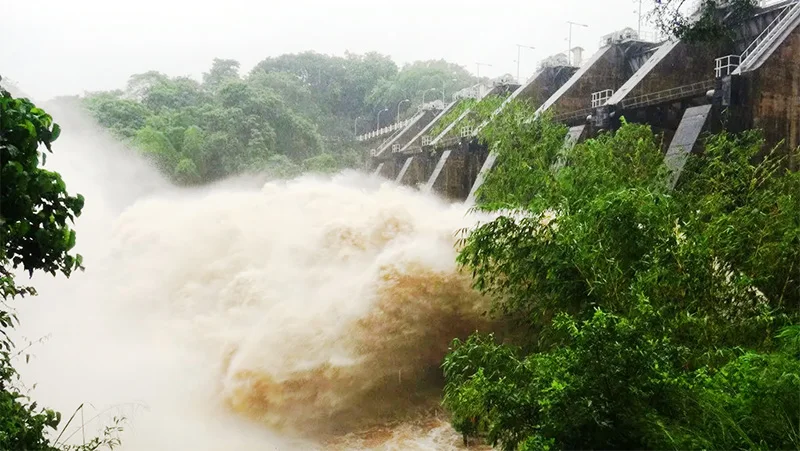
Most reservoirs in Sri Lanka are agriculture and hydropower dominated. Reservoir operators are often unwilling to acknowledge the flood detention capability of major reservoirs during the onset of monsoons. Deviating from the traditional priority for food production and hydropower development, it is time to reorient the operational approach of major reservoir operators under extreme events, where flood control becomes a vital function. While admitting that total elimination of flood impacts is not technically feasible, the impacts can be reduced by the efficient operation of reservoirs and effective early warning systems.
At the very outset, I would like to mention that the contents in this article are based on my personal experience in the Irrigation Department (ID), and there is no intention to disrespect their contributions during the most recent flood event. The objective is to improve the efficiency and the capability of the human resources available in the ID and other relevant institutions to better respond to future flood disasters.
Reservoir operation and flood forecasting
Reservoir management is an important aspect of water management, as water storage and release are crucial for managing floods and droughts. Several numerical models and guidelines have already been introduced to the ID and MASL during numerous training programs for reservoir management and forecasting of inflows.
This article highlights expectations of engineering professionals and discusses a framework for predicting reservoir inflows from its catchment by using the measured rainfall during the previous few days. Crucially, opening the reservoir gates must be timed to match the estimated inflow.
Similarly, rainfall-runoff relationships had been demonstrated and necessary training was provided to selected engineers during the past to make a quantitative (not qualitative) forecast of river water levels at downstream locations, based on the observed rainfall in the upstream catchment.
Already available information and technology
Furthermore, this article highlights the already available technology and addresses certain misinformation provided to the mass media by some professionals during recent discussions. These discrepancies are primarily related to the opening of reservoir gates and flood forecasting.
A. Assessing the 2025 Flood Magnitude
It is not logically sound to claim that the 2025 flood in the Kelani basin was the highest flood experienced historically. While, in terms of flood damage, it was probably the worst flood experienced due to rapid urbanisation in the lower Kelani basin. We have experienced many critical and dangerous floods in the past by hydraulic definition in the Kelani Ganga.
Historical water levels recorded at the Nagalagam Street gauge illustrate this point: (See Table)

In view of the above data, the highest water level recorded at the Nagalagam river gauge during the 2025 flood was 8.5 ft. This was a major flood, but not a critical or dangerous flood by definition.
B. Adherence to Reservoir Standing Orders
According to the standing orders of the ID, water levels in major reservoirs must be kept below the Full Supply Level (FSL) during the Northeast (NE) monsoon season (from October to March) until the end of December. According to my recollection, this operational height is 1.0m below the FSL. Therefore, maintaining a reservoir below the FSL during this period is not a new practice; it explicitly serves the dual purpose of dam safety and flood detention for the downstream areas.
C. Gate Operation Methodology
When a reservoir is reaching the FSL, the daily operation of gates is expected to be managed so that the inflow of water from the catchment rainfall is equal to the outflow through the spill gates (Inflow * Outflow). The methodology for estimating both the catchment inflow and the gate outflow is based on very simple formulas, which have been previously taught to the technical officers and engineers engaged in field operations.
D. Advanced Forecasting Capabilities
Sophisticated numerical models for rainfall-runoff relationships are available and known to subject specialists of the ID through the training provided over the last 40 years. For major reservoirs, the engineers in charge of field operations could be trained to estimate daily inflows to the reservoirs, especially in cases where the simple formulas mentioned in section C are not adequate.
Design concept of reservoir flood gates
Regarding the provision of reservoir spill gates, one must be mindful of the underlying principles of probability. Major reservoir spillways are designed for very high return periods, such as 1,000 and 10,000 years. If the spillway gates are opened fully when a reservoir is at full capacity, this can produce an artificial flood of a very large magnitude. A flood of such magnitude cannot occur under natural conditions. Therefore, reservoir operators must be mindful in this regard to avoid any artificial flood creation.
In reality, reservoir spillways are often designed for the sole safety of the reservoir structure, often compromising the safety of the downstream population. This design concept was promoted by foreign funding agencies in recent times to safeguard their investment for dams. Consequently, the discharge capacities of these spill gates significantly exceed the natural carrying capacity of river downstream. This design criterion requires serious consideration by future designers and policymakers.
Undesirable gate openings
The public often asks a basic question regarding flood hazards in a river system with reservoirs: Why is flooding more prominent downstream of reservoirs compared to the period before they were built? This concern is justifiable based on the following incidents.
For instance, why do Magama in Tissamaharama face flood threats after the construction of the massive Kirindi Oya reservoir? Similarly, why does Ambalantota flood after the construction of Udawalawe Reservoir? Furthermore, why is Molkawa in the Kalutara District area getting flooded so often after the construction of Kukule reservoir?
These situations exist in several other river basins too. Engineers must therefore be mindful of the need to strictly control the operation of reservoir gates by their field staff. The actual field situation can sometimes deviate significantly from the theoretical technology discussed in air- conditioned rooms. Due to this potential discrepancy, it is necessary to examine whether gate operators are strictly adhering to the operational guidelines, as gate operation currently relies too much on the discretion of the operator at the site.
In 2003, there was severe flood damage below Kaudulla reservoir in Polonnaruwa. I was instructed to find out the reason for this flooding by the then Minister of Mahaweli & Irrigation. During my field inspection, I found that the daily rainfall in the area had not exceeded 100mm, yet the downstream flood damage was unbelievable. I was certain that 100mm of rainfall could not create a flood of that magnitude. Further examination suggested that this was not a natural flood, but was created by the excessive release of water from the radial gates of the Kaudulla reservoir. There are several other similar incidents and those are beyond the space available for this document.
Revival of Innovative systems
It may be surprising to note the high quality of real-time flood forecasts issued by the ID for the Kelani River in the late 1980s and early 1990s. This was achieved despite the lack of modern computational skills and advanced communication systems. At that time, for instance, mobile phones were non-existent. Forecasts were issued primarily via the Sri Lanka Broadcasting Corporation (SLBC )in news bulletins.
A few examples of flood warning issued during the past available in official records of the ID are given below:
Forecast issued at 6th June 1989 at 5.00 PM
“The water level at Nagalagam street river gauge was at 9 ft 0 inches at 5.0 PM. This is 1.0 ft above the major flood level. Water level is likely to rise further, but not likely to endanger the Kelani flood bund”.
Eng. NGR. De Silva, Director Irrigation
Forecast issued at 30th Oct 1991 at 6.00 PM
“The water level at Nagalagam street river gauge was at 3 ft 3 inches at 6.0 PM. The water level likely to rise further during the next 24 hours, but will not exceed 5.0 ft.”
Eng. K.Yoganathan, Director Irrigation
Forecast issued at 6th June 1993 at 10.00 AM:
“The water level at Nagalagam street river gauge was at 4 ft 6 inches last night. The water level will not go above 5.0 ft within the next 24 hours.”
Eng. K.Yoganathan, Director Irrigation
Forecast issued at 8th June 1993 at 9.00 AM:
“The water level at Nagalagam Street River gauge was at 4 ft 6 inches at 7.00 AM. The water level will remain above 4.0 ft for the next 12 hours and this level will go below 4.0 ft in the night.
The water level is not expected to rise within next 24 hours.”
Eng.WNM Boteju,Director of Irrigation
Conclusion
Had this technology been consistently and effectively adopted, we could have significantly reduced the number of deaths and mitigated the unprecedented damage to our national infrastructure. The critical question then arises: Why is this known, established flood forecasting technology, already demonstrated by Sri Lankan authorities, not being put into practice during recent disasters? I will leave the answer to this question for social scientists, administrators and politicians in Sri Lanka.
Features
Rebuilding Sri Lanka for the long term
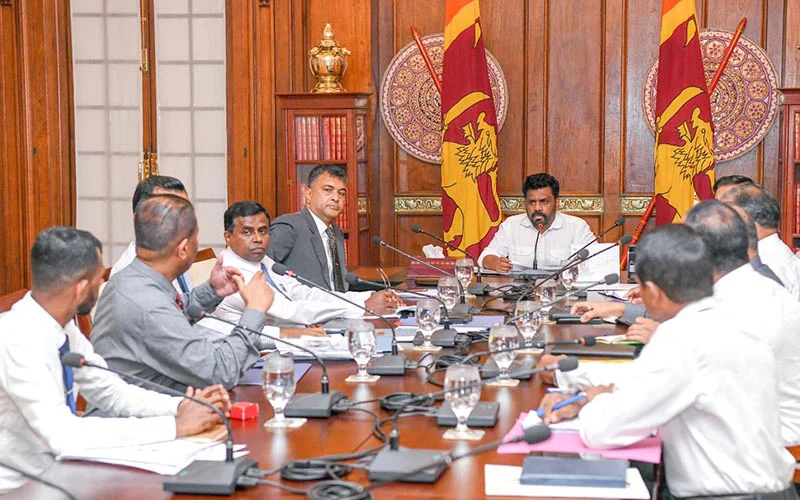
The government is rebuilding the cyclone-devastated lives, livelihoods and infrastructure in the country after the immense destruction caused by Cyclone Ditwah. President Anura Kumara Dissanayake has been providing exceptional leadership by going into the cyclone affected communities in person, to mingle directly with the people there and to offer encouragement and hope to them. A President who can be in the midst of people when they are suffering and in sorrow is a true leader. In a political culture where leaders have often been distant from the everyday hardships of ordinary people, this visible presence would have a reassuring psychological effect.
The international community appears to be comfortable with the government and has been united in giving it immediate support. Whether it be Indian and US helicopters that provided essential airlift capacity or cargo loads of relief material that have come from numerous countries, or funds raised from the people of tiny Maldives, the support has given Sri Lankans the sense of being a part of the world family. The speed and breadth of this response has contrasted sharply with the isolation Sri Lanka experienced during some of the darker moments of its recent past.
There is no better indicator of the international goodwill to Sri Lanka as in the personal donations for emergency relief that have been made by members of the diplomatic corps in Sri Lanka. Such gestures go beyond formal diplomacy and suggest a degree of personal confidence in the direction in which the country is moving. The office of the UN representative in Sri Lanka has now taken the initiative to launch a campaign for longer term support, signalling that emergency assistance can be a bridge to sustained engagement rather than a one-off intervention.
Balanced Statement
In a world that has turned increasingly to looking after narrow national interests rather than broad common interests, Sri Lanka appears to have found a way to obtain the support of all countries. It has received support from countries that are openly rivals to each other. This rare convergence reflects a perception that Sri Lanka is not seeking to play one power against another, and balancing them, but rather to rebuild itself on the basis of stability, inclusiveness and responsible governance.
An excerpt from an interview that President Dissanayake gave to the US based Newsweek magazine is worth reproducing. In just one paragraph he has summed up Sri Lankan foreign policy that can last the test of time. A question Newsweek put to the president was: “Sri Lanka sits at the crossroads of Chinese built infrastructure, Indian regional influence and US economic leverage. To what extent does Sri Lanka truly retain strategic autonomy, and how do you balance these relationships?”
The president replied: “India is Sri Lanka’s closest neighbour, separated by about 24 km of ocean. We have a civilisational connection with India. There is hardly any aspect of life in Sri Lanka that is not connected to India in some way or another. India has been the first responder whenever Sri Lanka has faced difficulty. India is also our largest trading partner, our largest source of tourism and a significant investor in Sri Lanka. China is also a close and strategic partner. We have a long historic relationship—both at the state level and at a political party level. Our trade, investment and infrastructure partnership is very strong. The United States and Sri Lanka also have deep and multifaceted ties. The US is our largest market. We also have shared democratic values and a commitment to a rules-based order. We don’t look at our relations with these important countries as balancing. Each of our relationships is important to us. We work with everyone, but always with a single purpose – a better world for Sri Lankans, in a better world for all.”
Wider Issues
The President’s articulation of foreign relations, especially the underlying theme of working with everyone for the wellbeing of all, resonates strongly in the context of the present crisis. The willingness of all major partners to assist Sri Lanka simultaneously suggests that goodwill generated through effective disaster response can translate into broader political and diplomatic space. Within the country, the government has been successful in calling for and in obtaining the support of civil society which has an ethos of filling in gaps by seeking the inclusion of marginalised groups and communities who may be left out of the mainstream of development.
Civil society organisations have historically played a crucial role in Sri Lanka during times of crisis, often reaching communities that state institutions struggle to access. Following a meeting with CSOs, at which the president requested their support and assured them of their freedom to choose, the CSOs mobilised in all flood affected parts of the country, many of them as part of a CSO Collective for Emergency Response. An important initiative was to undertake the task of ascertaining the needs of the cyclone affected people. Volunteers from a number of civil society groups fanned out throughout the country to collect the necessary information. This effort helped to ground relief efforts in real needs rather than assumptions, reducing duplication and ensuring that assistance reached those most affected.
The priority that the government is currently having to give to post-cyclone rebuilding must not distract it from giving priority attention to dealing with postwar issues. The government has the ability and value-system to resolve other national problems. Resolving issues of post disaster rebuilding in the aftermath of the cyclone have commonalities in relation to the civil war that ended in 2009. The failure of successive governments to address those issues has prompted the international community to continuously question and find fault with Sri Lanka at the UN. This history has weighed heavily on Sri Lanka’s international standing and has limited its ability to fully leverage external support.
Required Urgency
At a time when the international community is demonstrating enormous goodwill to Sri Lanka, the lessons learnt from their own experiences, and the encouraging support they are giving Sri Lanka at present, can and must be utilised. The government under President Dissanayake has committed to a non-racist Sri Lanka in which all citizens will be treated equally. The experience of other countries, such as the UK, India, Switzerland, Canada and South Africa show that problems between ethnic communities also require inter community power sharing in the form of devolution of power. Countries that have succeeded in reconciling diversity with unity have done so by embedding inclusion into governance structures rather than treating it as a temporary concession.
Sri Lanka’s present moment of international goodwill provides a rare opening to learn from these experiences with the encouragement and support of its partners, including civil society which has shown its readiness to join hands with the government in working for the people’s wellbeing. The unresolved problems of land resettlement, compensation for lost lives and homes, finding the truth about missing persons continue to weigh heavily on the minds and psyche of people in the former war zones of the north and east even as they do so for the more recent victims of the cyclone.
Unresolved grievances do not disappear with time. They resurface periodically, often in moments of political transition or social stress, undermining national cohesion. The government needs to ensure sustainable solutions not only to climate related development, but also to ethnic peace and national reconciliation. The government needs to bring together the urgency of disaster recovery with the long-postponed task of political reform as done in the Indonesian province of Aceh in the aftermath of the 2004 tsunami for which it needs bipartisan political support. Doing so could transform a national tragedy into a turning point for long lasting unity and economic take-off.
by Jehan Perera
-
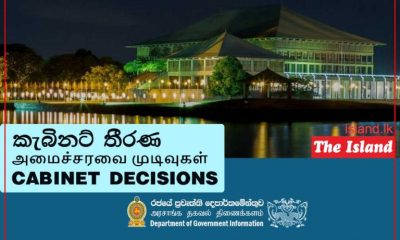
 Business6 days ago
Business6 days agoCabinet approves establishment of two 50 MW wind power stations in Mullikulum, Mannar region
-

 News7 days ago
News7 days agoGota ordered to give court evidence of life threats
-

 Features7 days ago
Features7 days agoCliff and Hank recreate golden era of ‘The Young Ones’
-
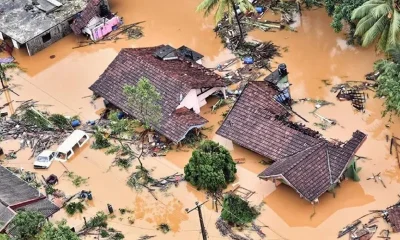
 Features7 days ago
Features7 days agoSri Lanka and Global Climate Emergency: Lessons of Cyclone Ditwah
-

 Editorial7 days ago
Editorial7 days agoExperience vs. Inexperience
-

 Features4 days ago
Features4 days agoWhy Sri Lanka Still Has No Doppler Radar – and Who Should Be Held Accountable
-

 News7 days ago
News7 days agoWFP scales up its emergency response in Sri Lanka
-

 Features6 days ago
Features6 days agoDitwah: A Country Tested, A People United













